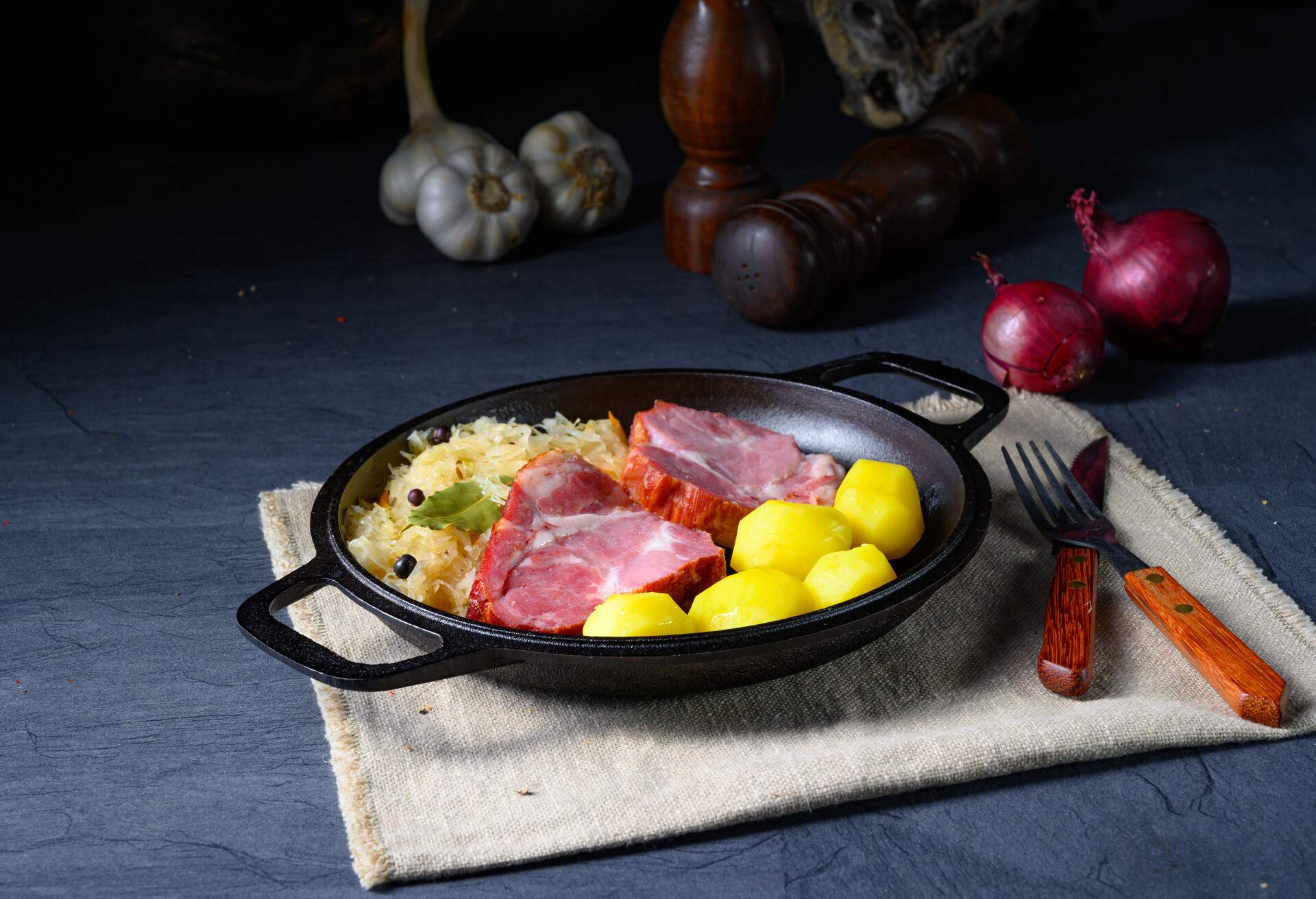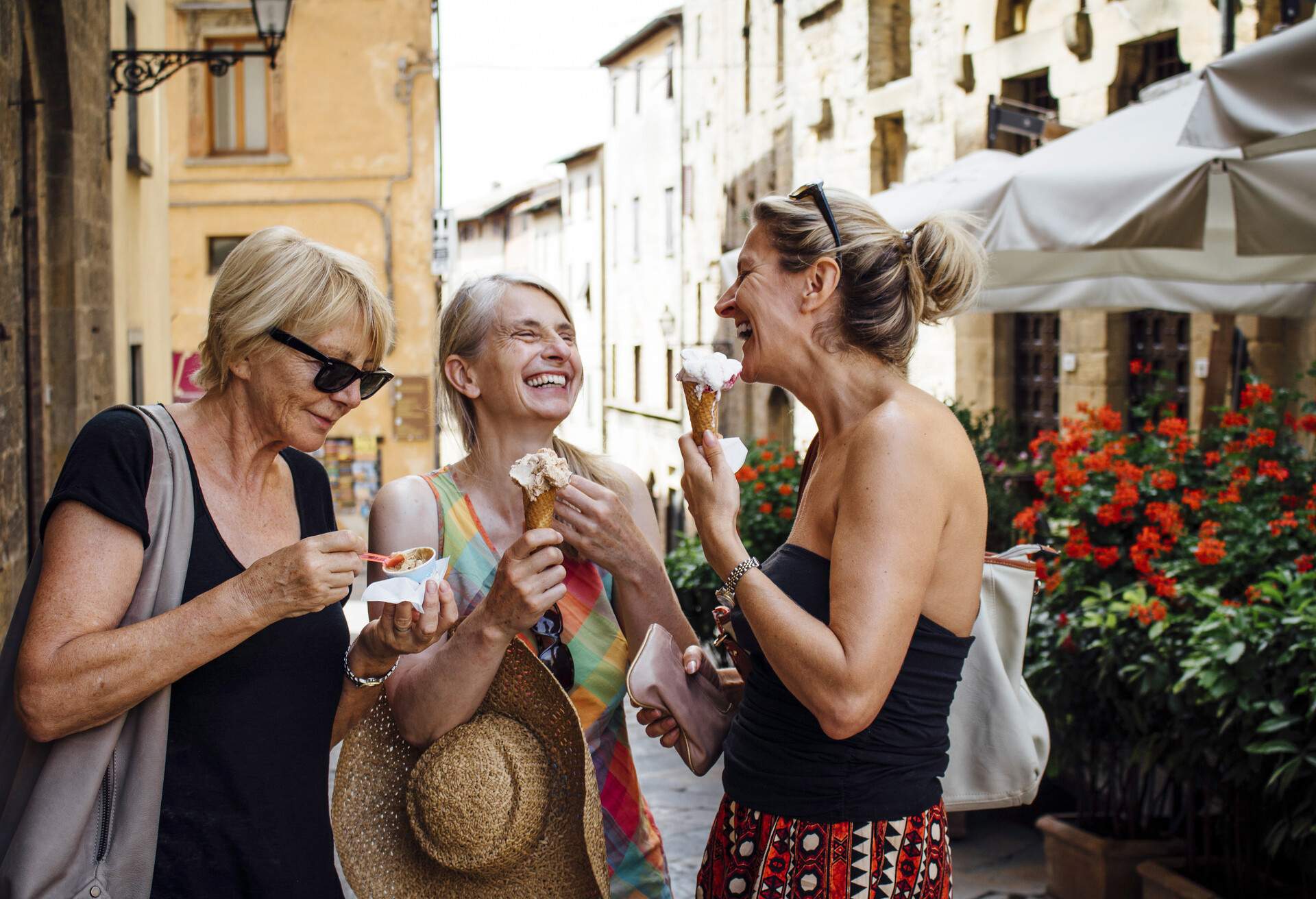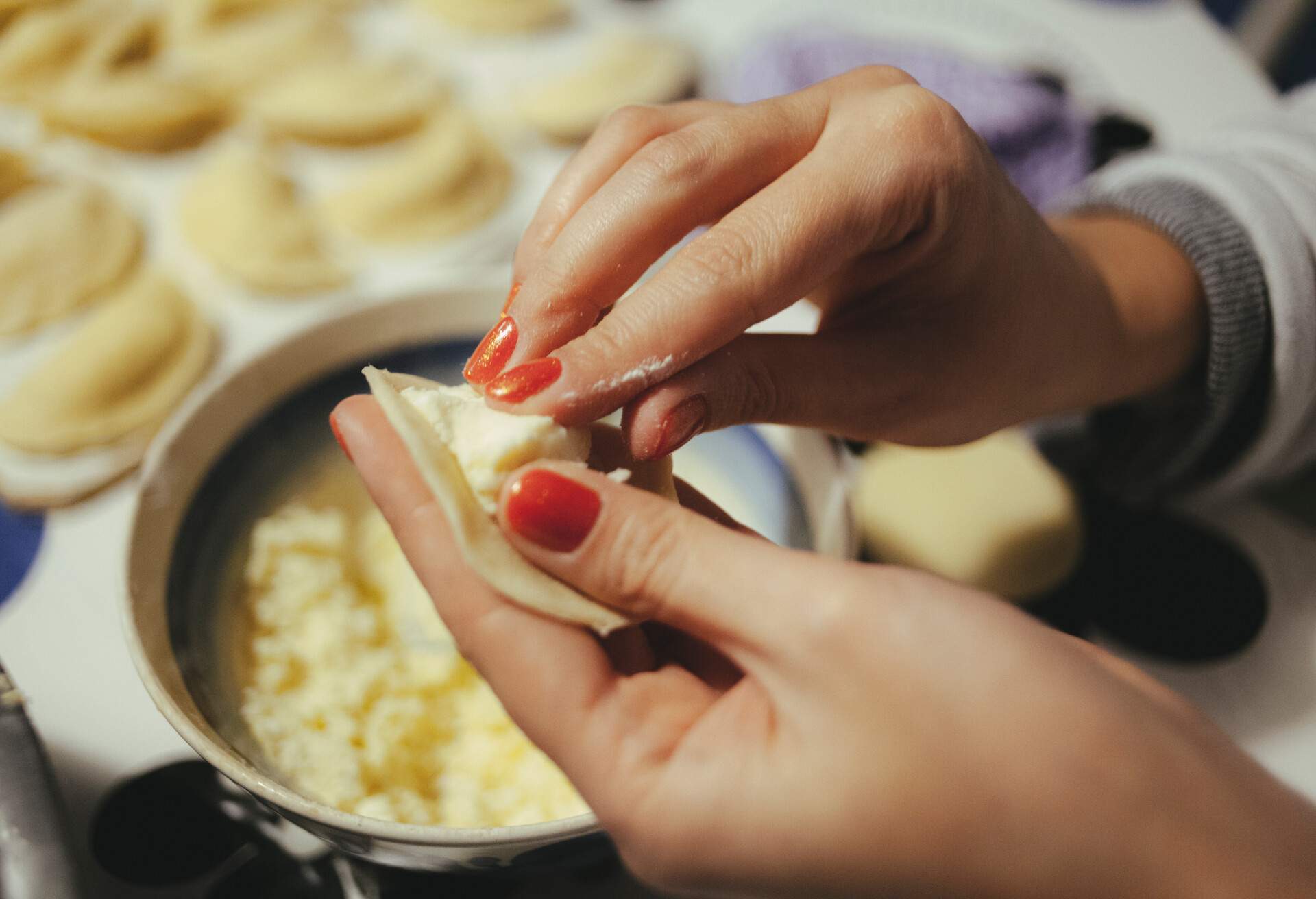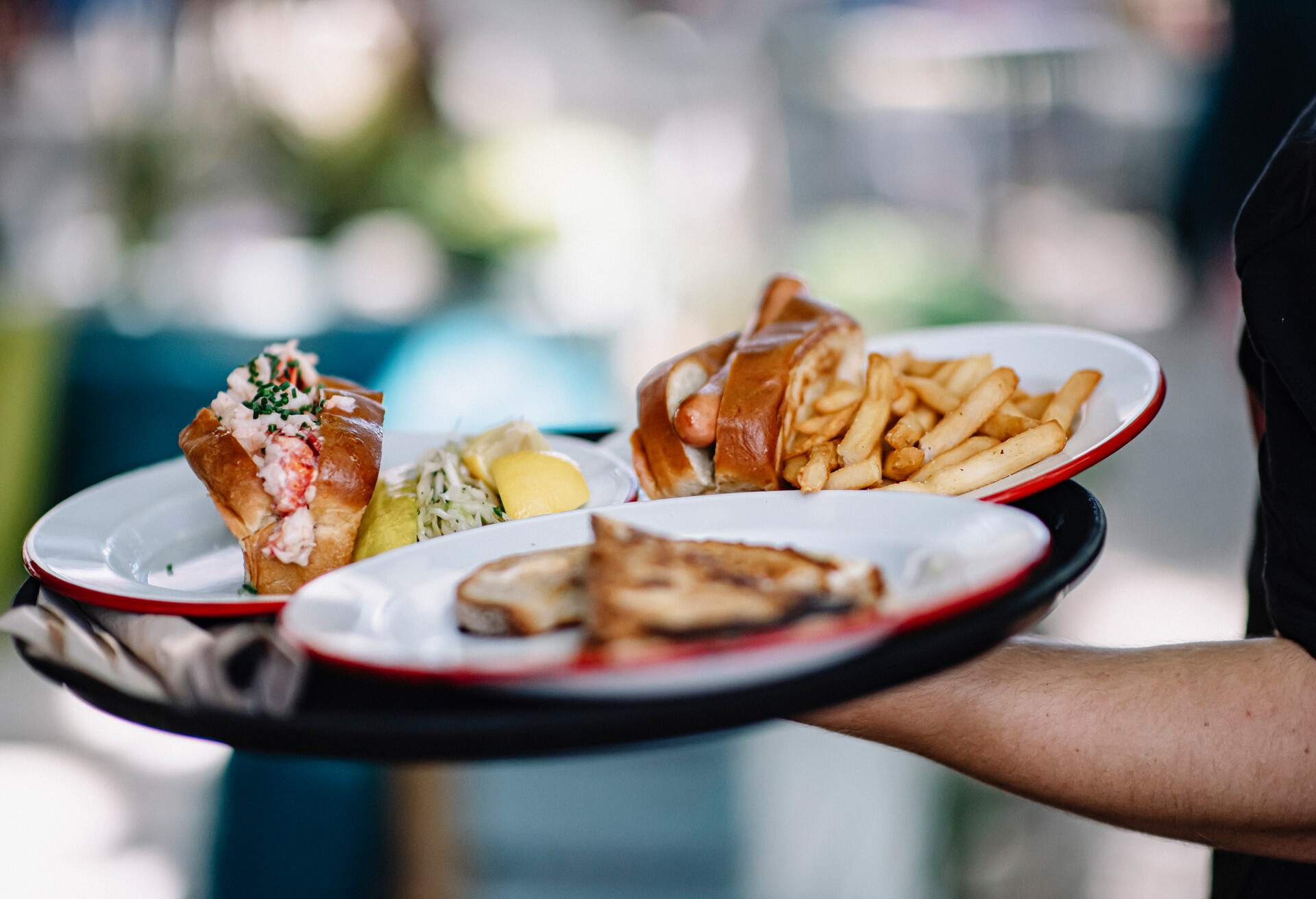Ireland, like each country in the UK, has its own distinctive food culture. Naturally, you’ll find Irish variations on classic British dishes like bangers and mash or bread pudding. The real taste experience, though, lies elsewhere. A true foodie holiday is about sampling traditional Irish foods that are unique to the island.
Irish cuisine offers far more than whiskey and potatoes, too – although there’s certainly plenty of those about.
You can taste traditional stews, pies, and seafood dishes, and pastries, bread, and cakes are also waiting for you. Much of it is hearty down-to-earth food, closely tied to Irish culture and historical conditions. For ideas on other things to do on the Emerald Isle while enjoying your foodie holiday, you can read our online Ireland Travel Guide.
Unique and traditional Irish foods
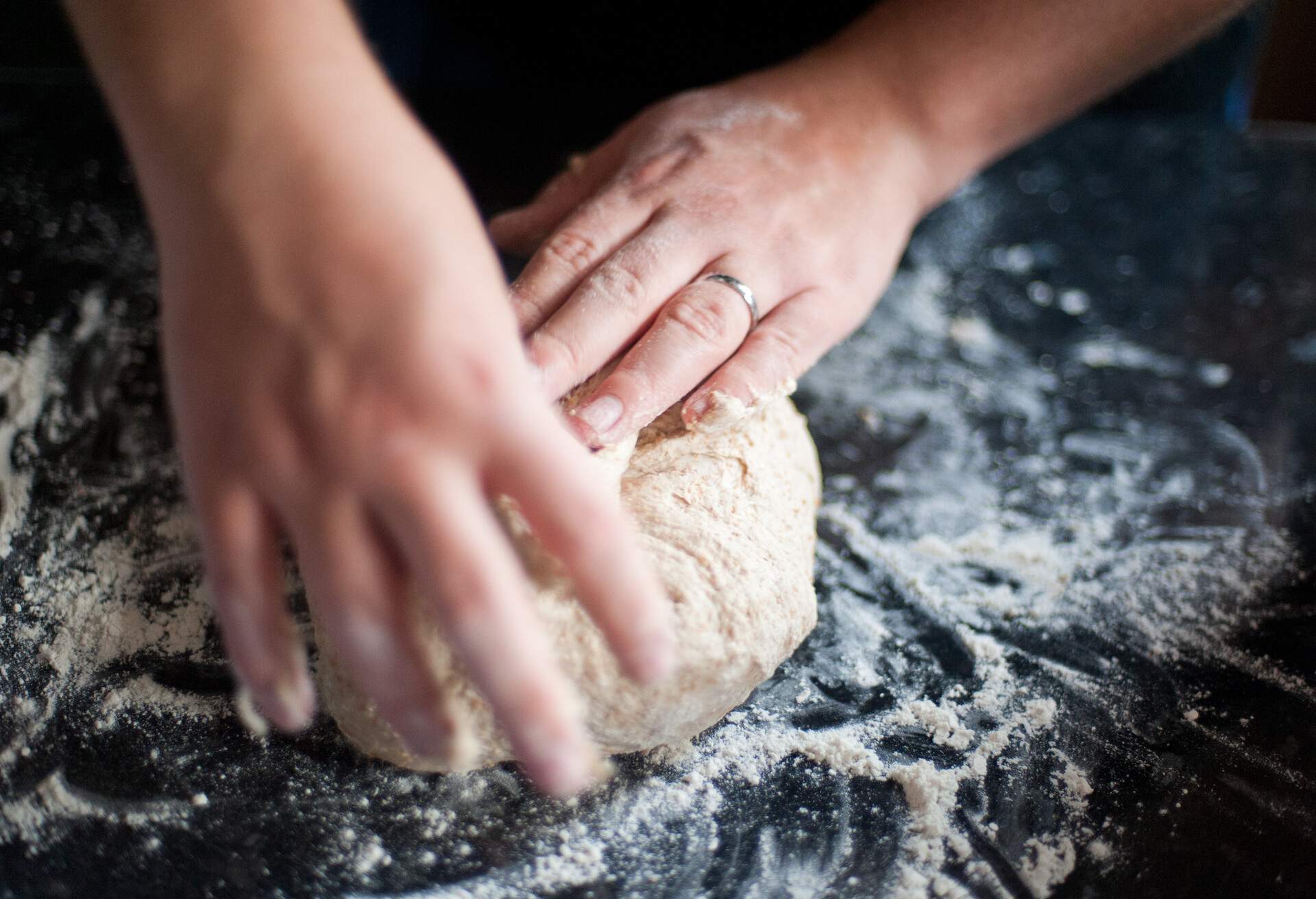
Wherever you go in Ireland, you’ll come across the same basic foods. Two, in particular, stand out: Ireland’s beloved breakfast and its indigenous bread.
Black and white pudding
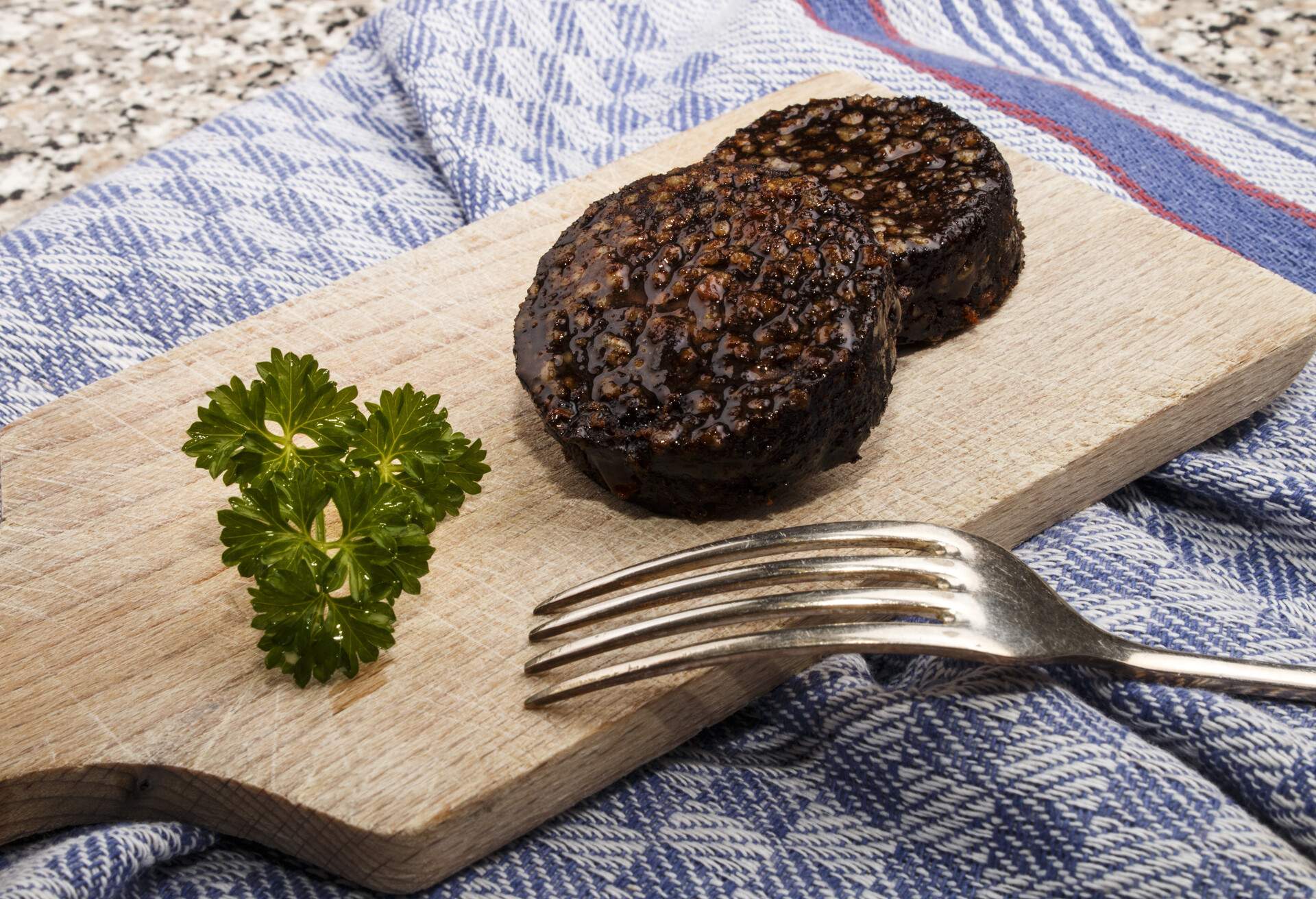
While black pudding is eaten for breakfast from Yorkshire to Scotland, Ireland creates its own variation of this dish that’s something of an acquired taste. Black pudding is a sausage made from minced pork, fat, and blood, mixed with suet, oatmeal, and barley. It’s cooked and eaten in slices. White pudding is a lesser-known version, essentially the same thing, without the blood.
In Ireland, the two are traditionally eaten together as a staple breakfast, served with roasted vegetables. The delicacy has gained modern foodie cachet, so you can find it on restaurant menus throughout the day. It can be served in salads and croquettes or with scallops for dinner. You can also get black pudding risottos.
Soda bread
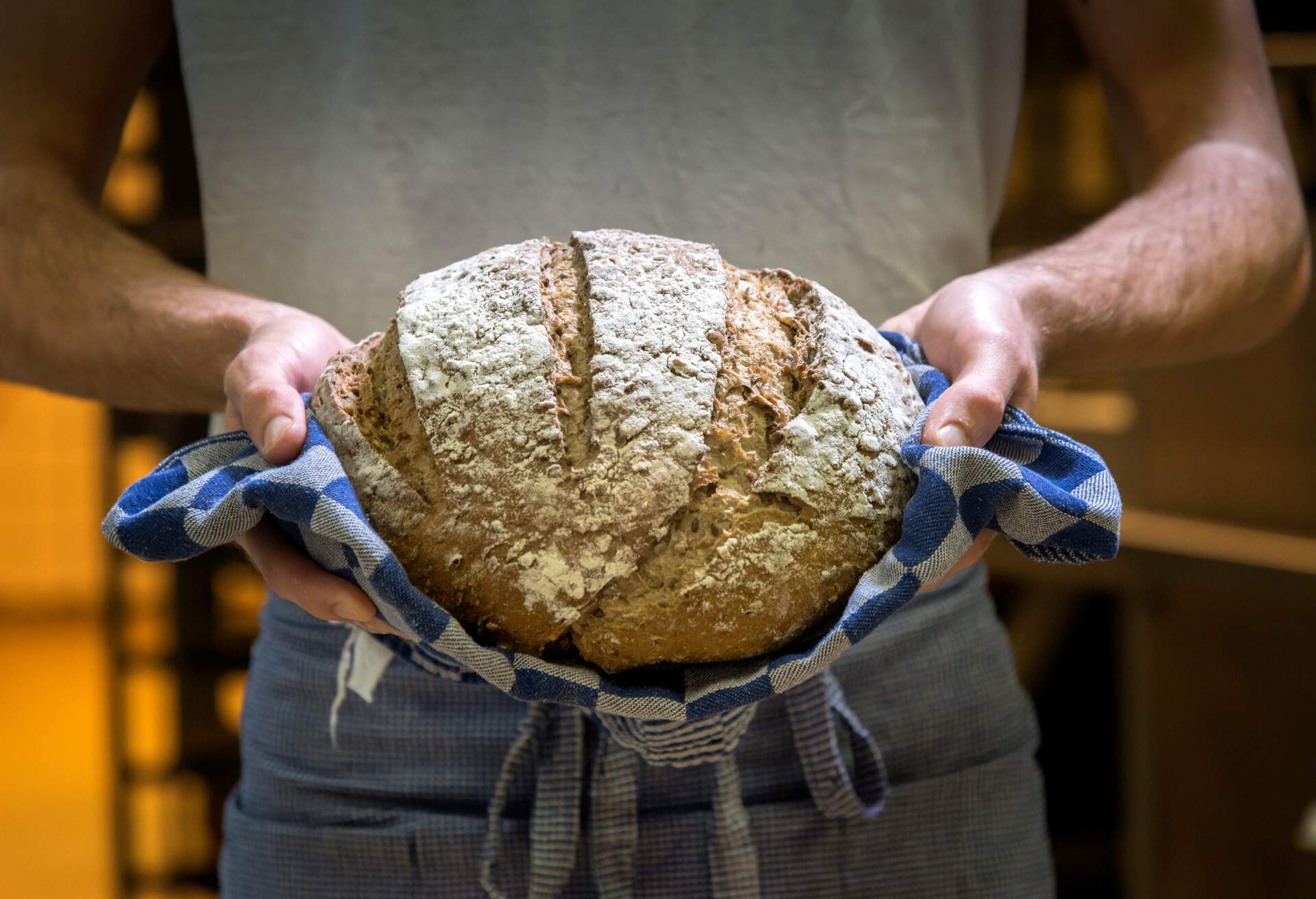
This traditional Irish food might sound a bit banal, but don’t be taken in by the name. The basic ingredients, flour mixed with buttermilk and bicarbonate of soda, are always the same. However, virtually every Irish family has its own delicious recipe that builds on this foundation. It’s worth tasting different ones in pubs, cafes, and restaurants when you get the chance.
You can try sweet soda bread, made with honey or dried fruit. A Guinness and treacle combination is another taste sensation altogether. You can also get healthy bread variants. These are typically made with bran, oats, or seeds.
Traditional Irish stews
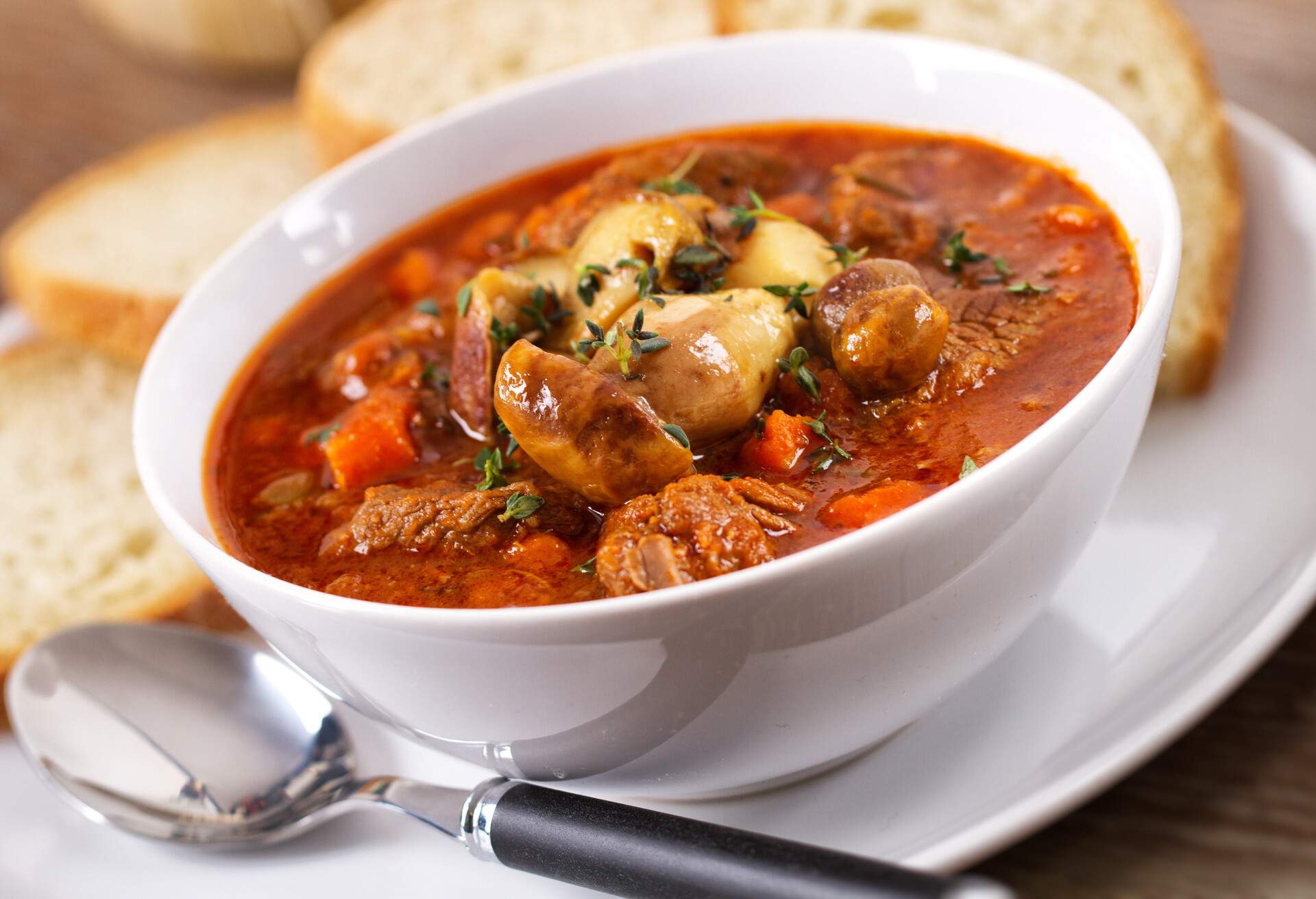
You can’t explore traditional Irish foods without tasting some of the many stews that originated here. These are hearty, basic dishes originally created to provide sustenance for farmers and farmworkers. They have simple ingredients, and you’ll find them served all over Ireland. There are three main ones to try.
Irish stew
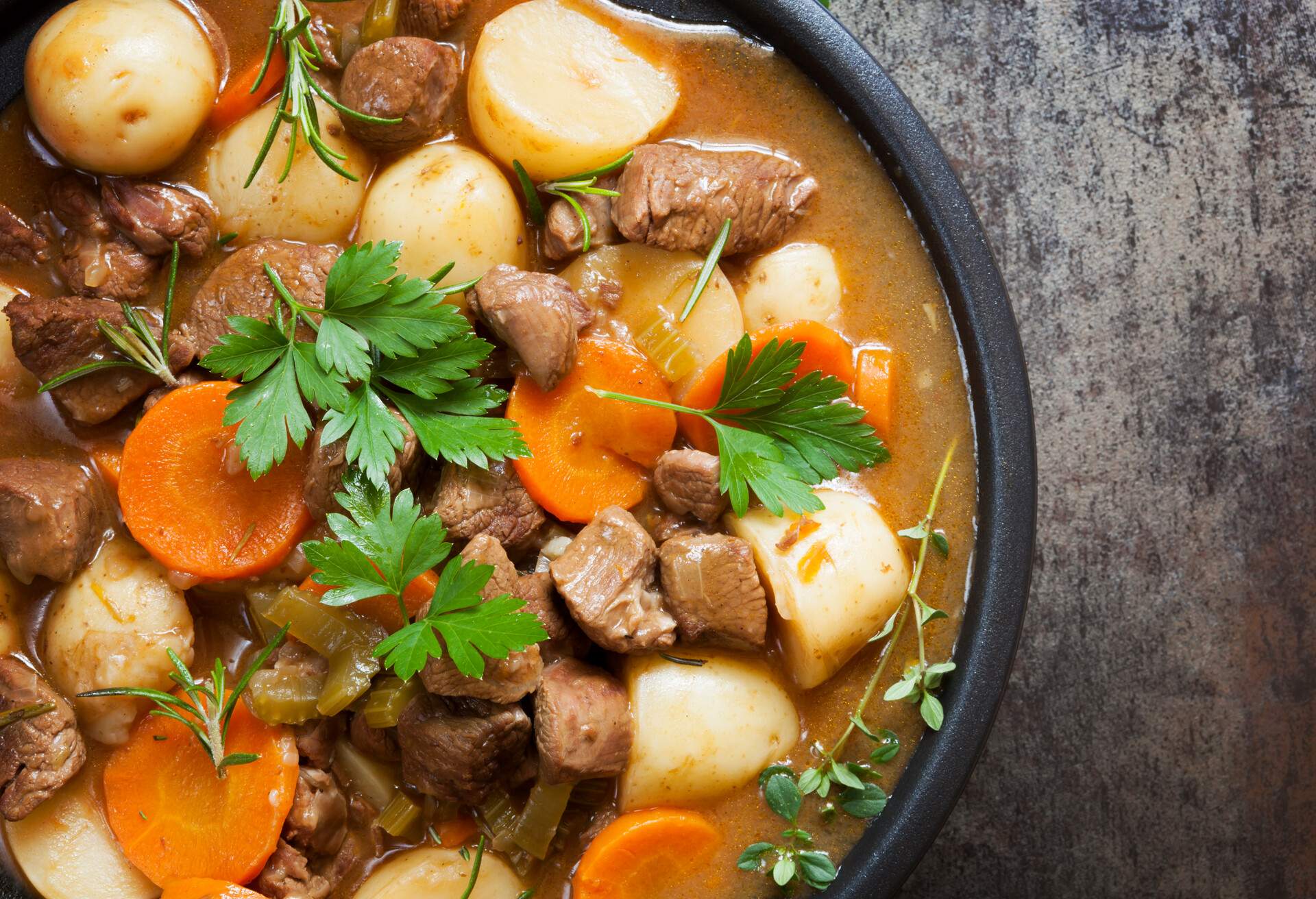
One-pot cooking is a central feature of traditional Irish foods. Simple ingredients are typically combined with meat, and the defining version is the Irish stew. It’s made with lamb or mutton, potatoes, and onions. Herbs like bay leaves and thyme add flavour, and pearl barley is often added.
Dublin coddle
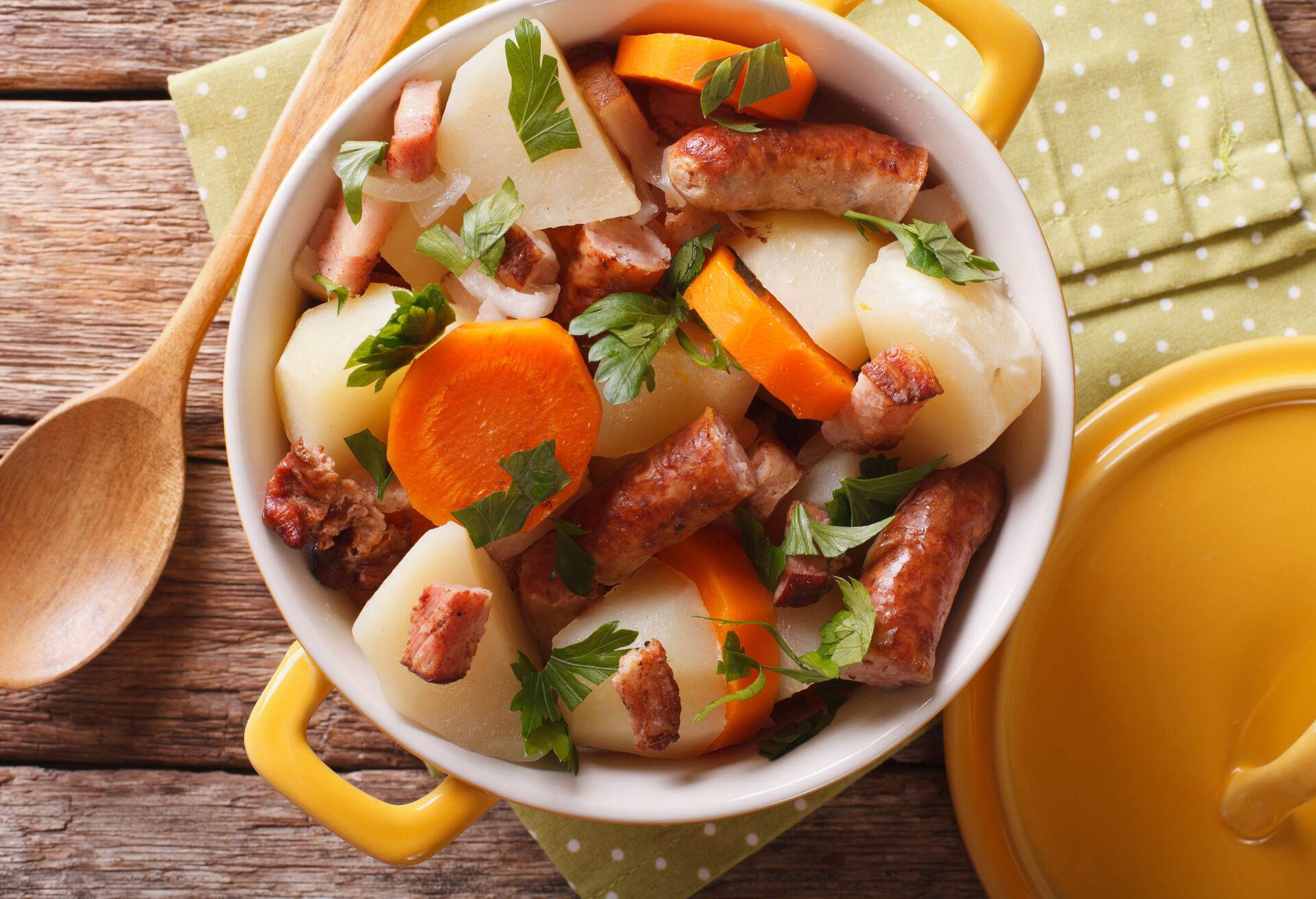
This is a very traditional working class dish. It’s another one-pot stew, simmered very slowly as if coddling the ingredients – hence its name. It’s authentically made from leftovers like slices of pork sausage, bacon bits, and potatoes. Of course, it’s made with fresh ingredients in the city’s restaurants, though. Enjoy it with traditional soda bread.
If you want to read about the other cultural and historical attractions in Ireland’s capital, here’s a guide for things to do in Dublin. You can also plan a shorter visit – have a look at what you can include on a weekend in Dublin.
Boiled bacon and cabbage
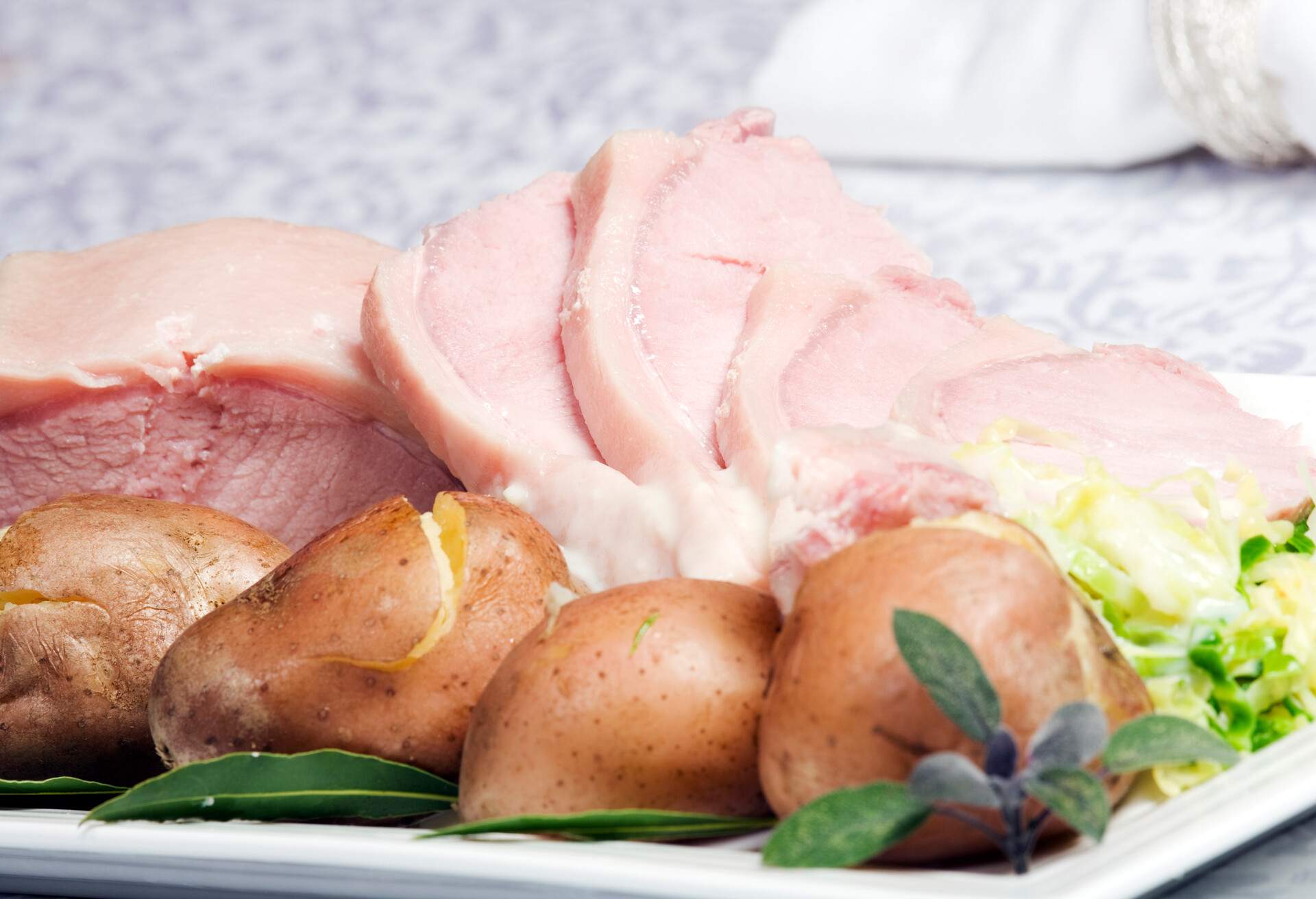
This might not sound very enticing, but it’s a firm favourite in Ireland. Salted pork is soaked overnight, then boiled. The cabbage is added right at the end, and it’s served with a parsley sauce. Irish immigrants in the USA have adapted the dish and use corned beef instead of bacon.
Traditional Irish foods: potato dishes
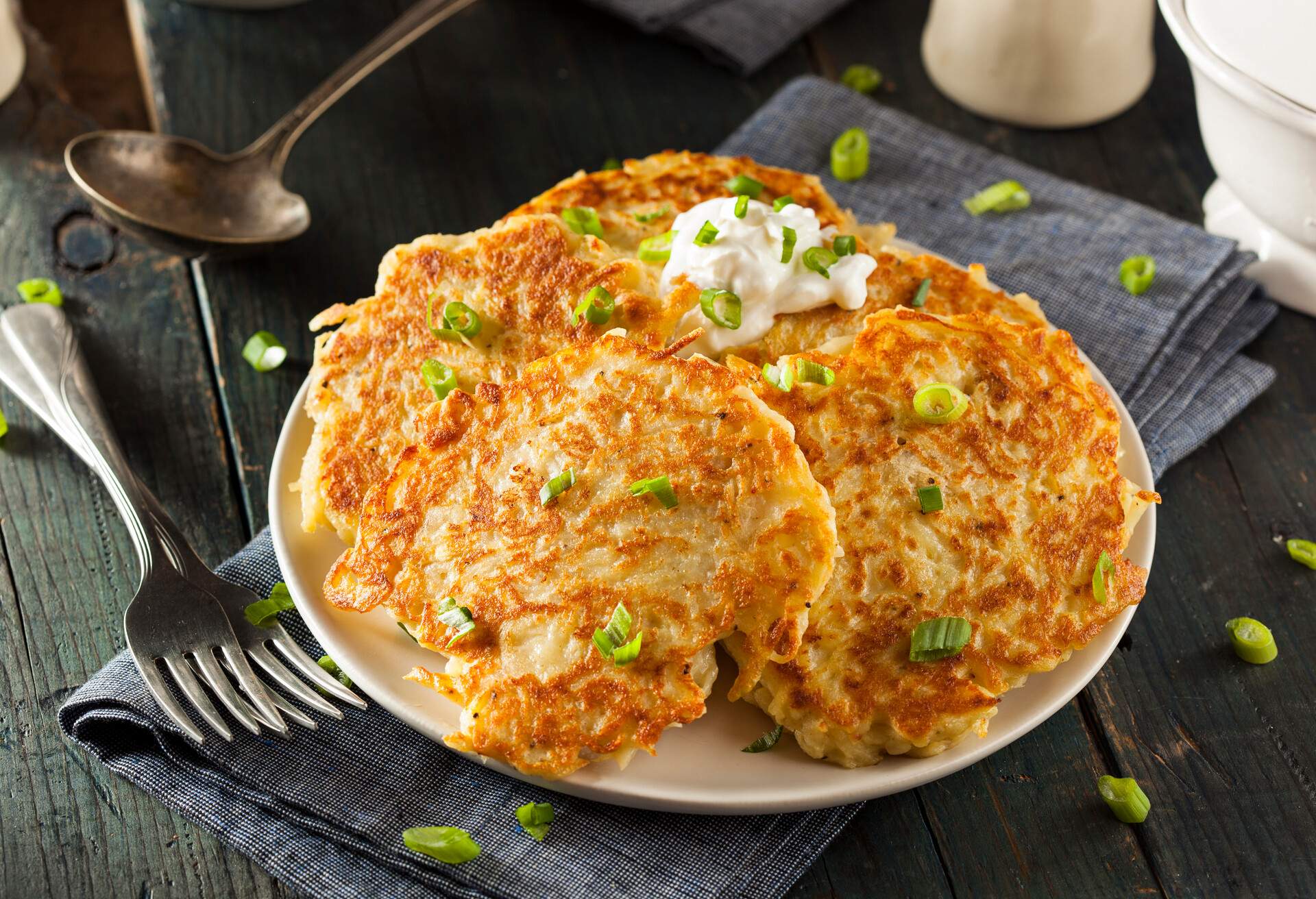
Potatoes are synonymous with Ireland. So it’s no surprise that some of the country’s most beloved traditional dishes have it as their main ingredient. These are typically meal accompaniments, but they can be eaten on their own, too. As with most traditional Irish foods, they’re simple yet delicious.
Colcannon
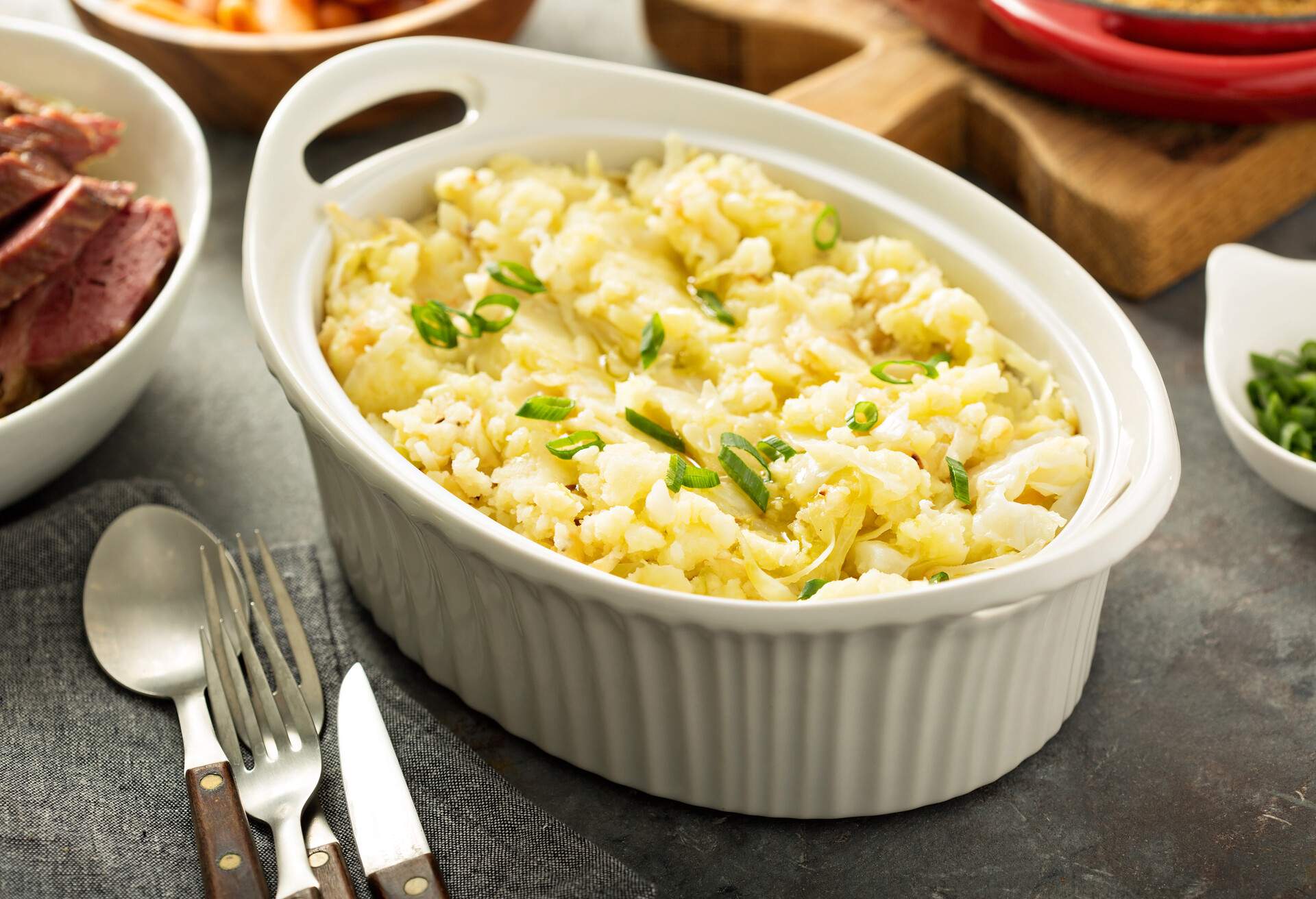
Colcannon is a very popular Irish comfort food. It’s also served as a side dish with stews or with boiled ham. It’s a mixture of mashed potatoes, butter and cabbage. Spring onions are sometimes used to add a slightly sharper flavour, and kale has become a modern substitute for cabbage. This is good Irish food at its most basic.
Champ
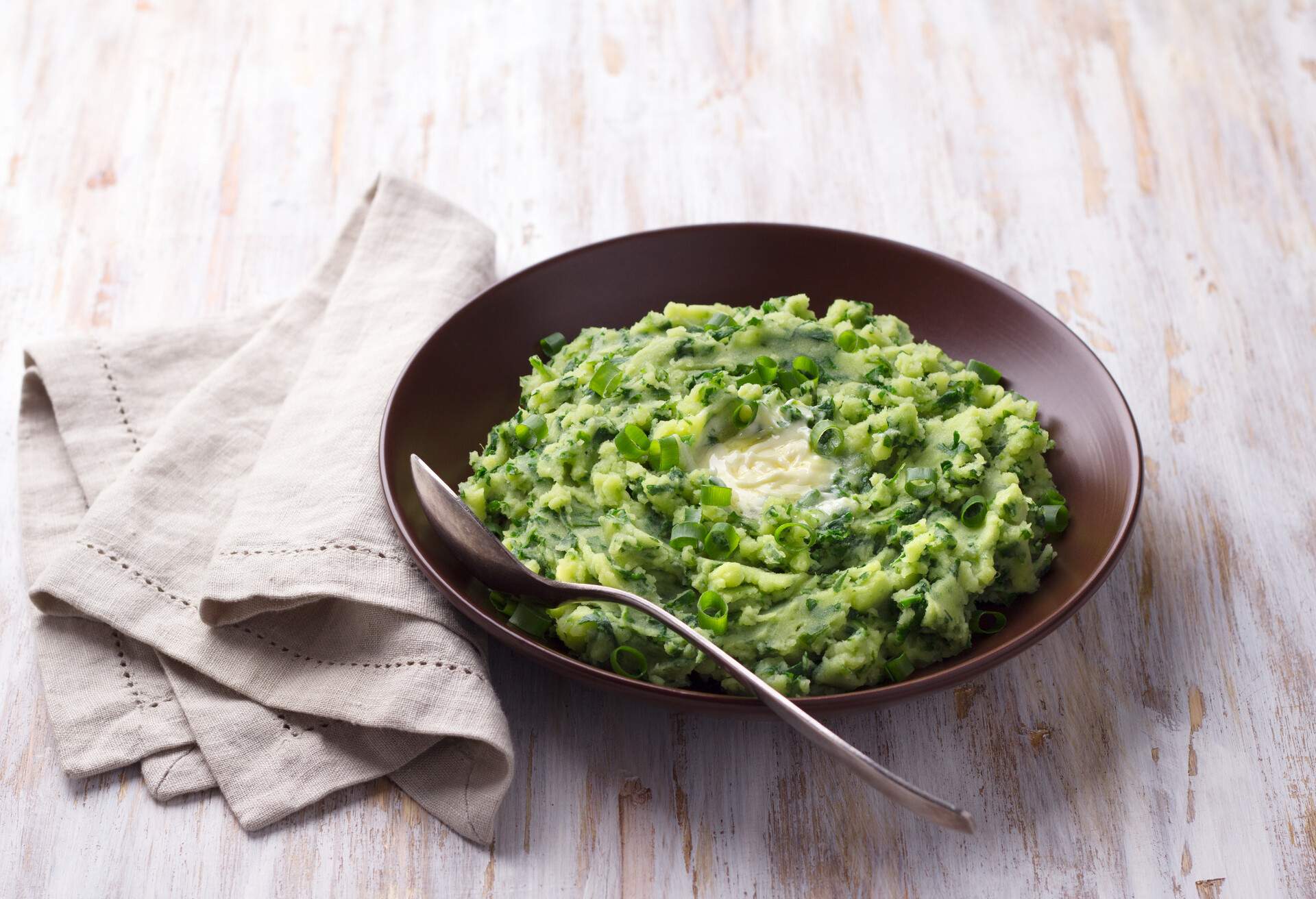
Champ is very similar to colcannon. It’s also made from mashed potatoes and butter, but it’s much richer. The butter is used very liberally, pooling inside the mash, creating a very filling vegetable side dish for stews. Green onions are sliced on top as a garnish and for some extra flavour.
Boxty
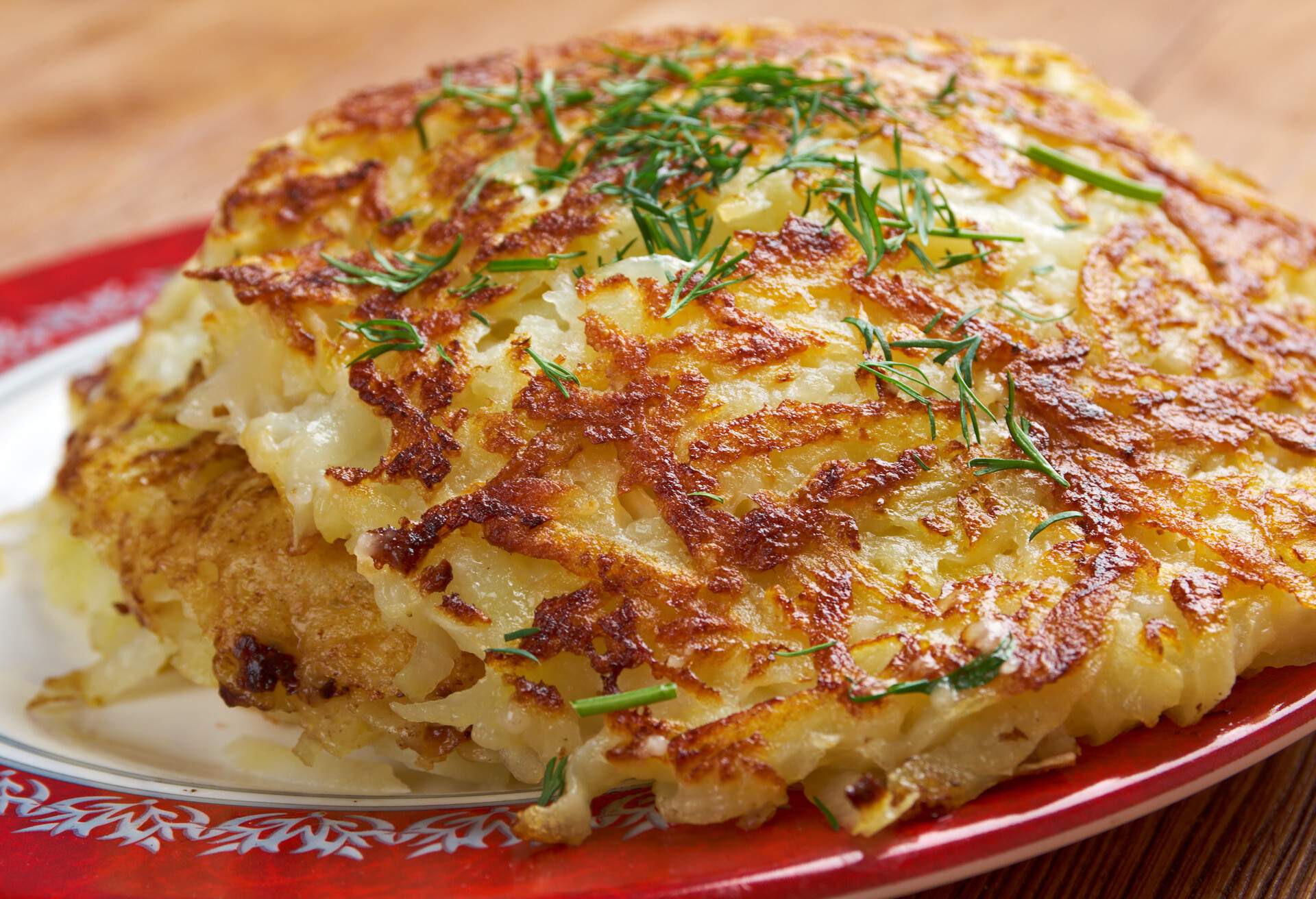
Boxty is a simple combination of raw grated potato mixed with mashed potato. Preparation methods differ from this point. It can be mixed with flour and boiled, then fried in butter. Or a pancake type of batter can be added and then either fried immediately or baked in a loaf tin before being fried.
Potato soup
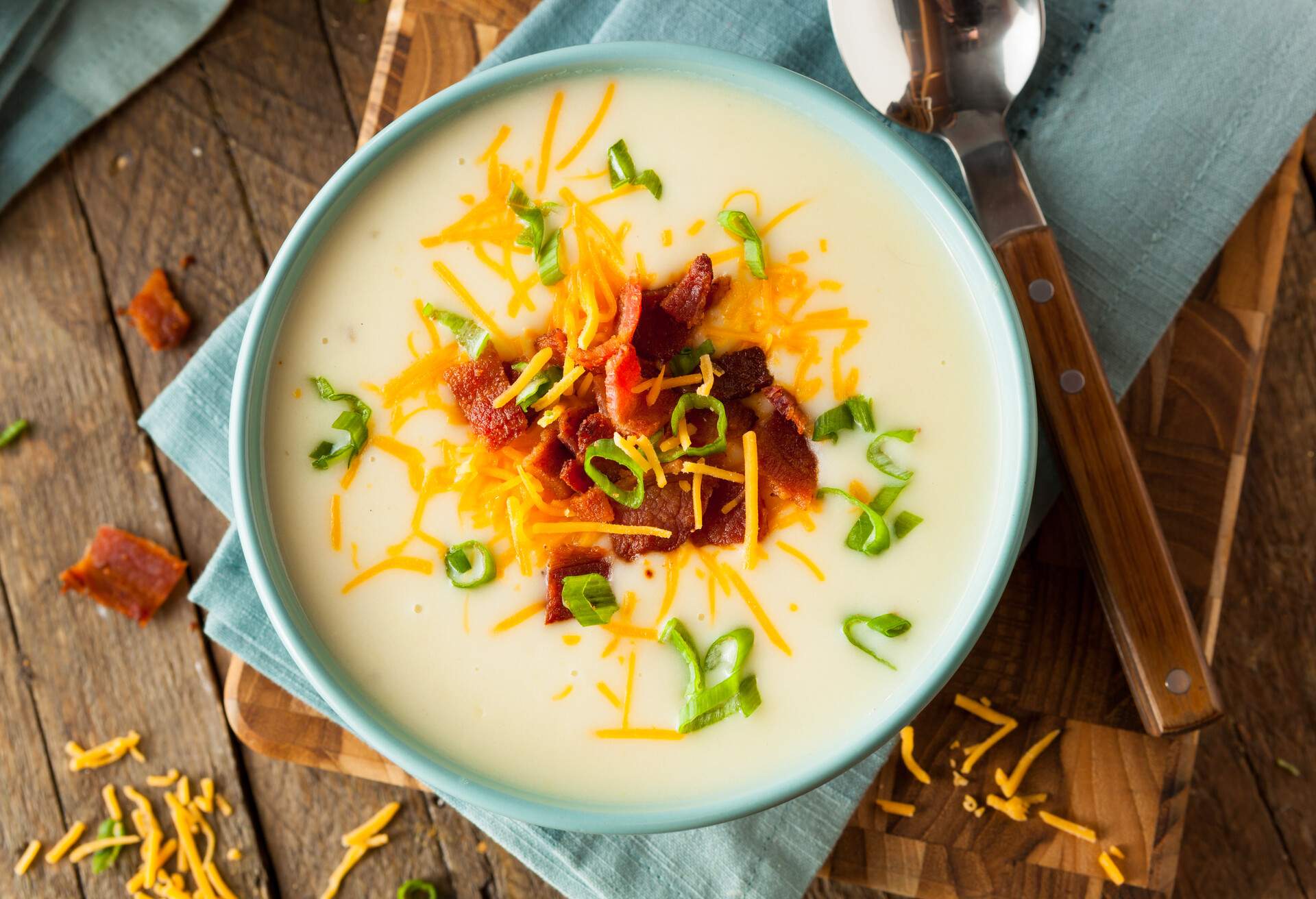
The final traditional potato dish is a simple potato soup. There are various recipes, but a common way of preparing it is to add carrots, celery, onions and thinly sliced bacon. Others add chicken or vegetable stock. Grated cheese and spice mixes are also popular additions.
Traditional Irish pies
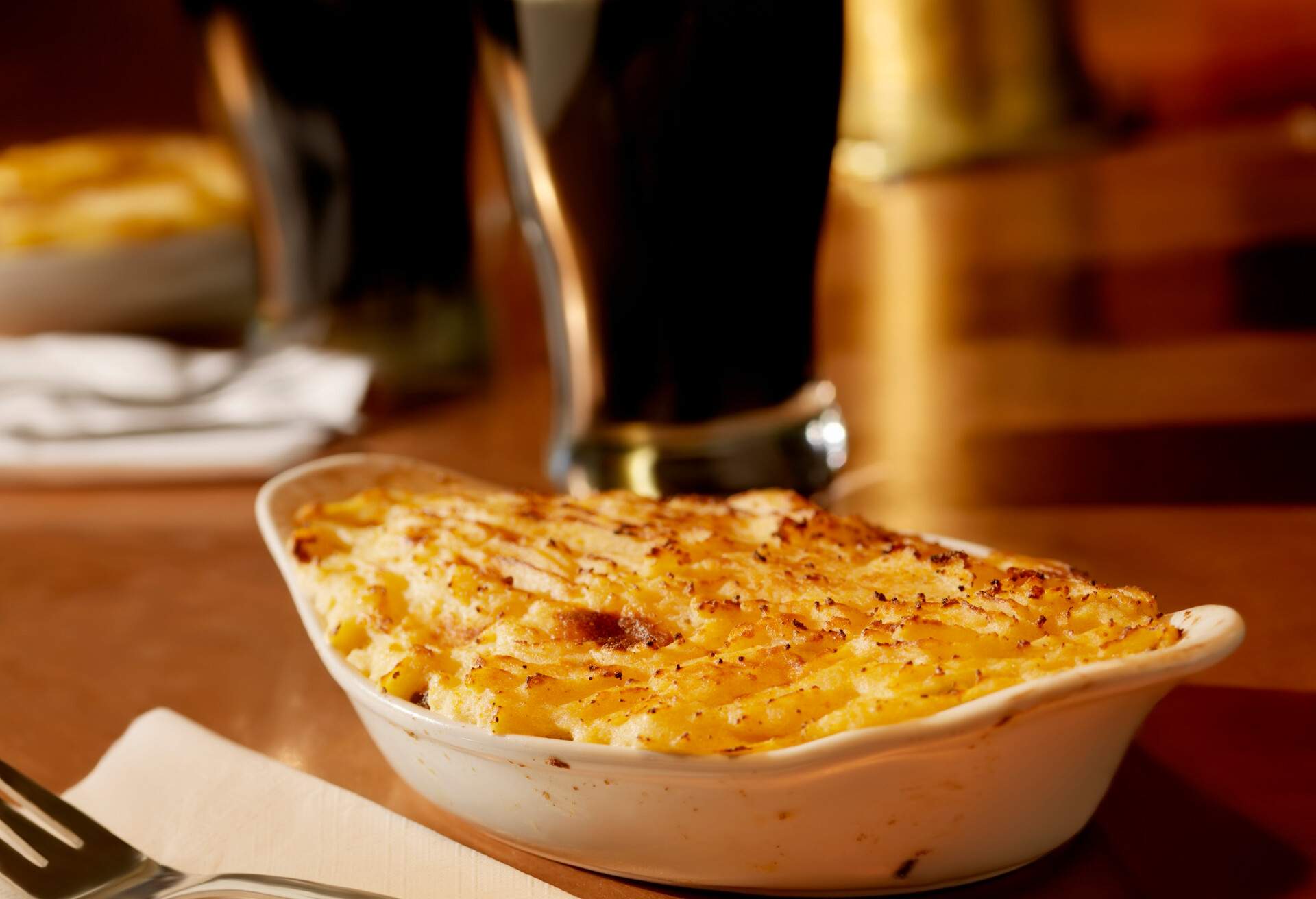
Every territory in the UK makes its own contribution to the nation’s age-old pie-eating culture. Ireland is no exception. It’s not hard to find traditional Irish pies at almost any cafe or pub. There are three stand-outs among them.
Irish pasties
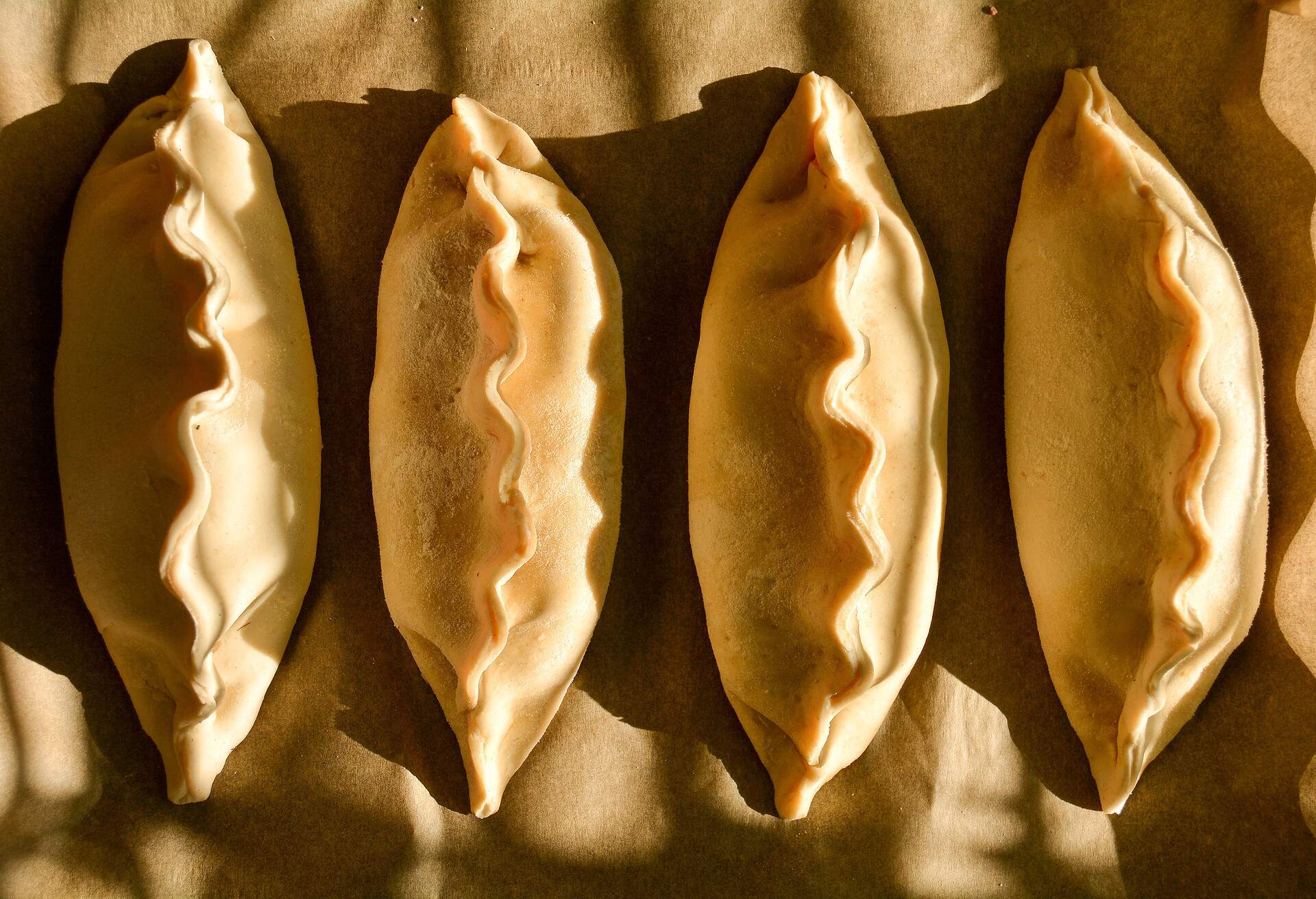
Irish pasties are similar to Cornish pasties. They’re eaten as a snack food or covered in gravy with potato chips. The latter is known locally as a pastie supper. The meat filling is usually minced beef or pork, and you’ll find them in almost every pub in the country.
Shepherd’s pie
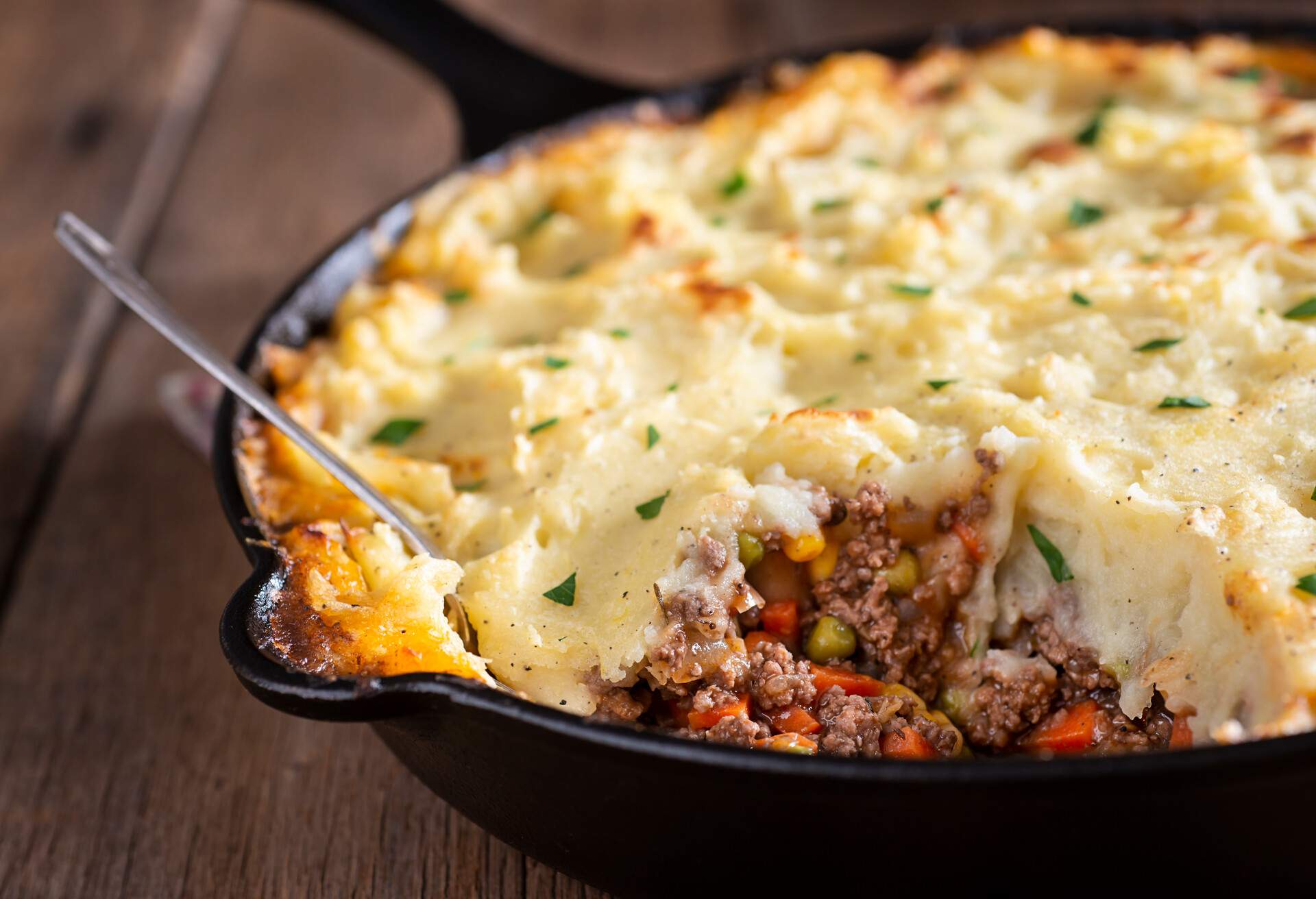
Shepherd’s pie, or cottage pie, isn’t indigenous to Ireland, but the country has its own variation on this hugely popular British dish. There’s an age-old debate on the use of vegetables, but that aside, it’s simply made from minced beef with mashed potato layered on top. The Irish version does call for vegetables like carrots and peas. It’s best eaten in a small rural town restaurant.
Fisherman’s pie
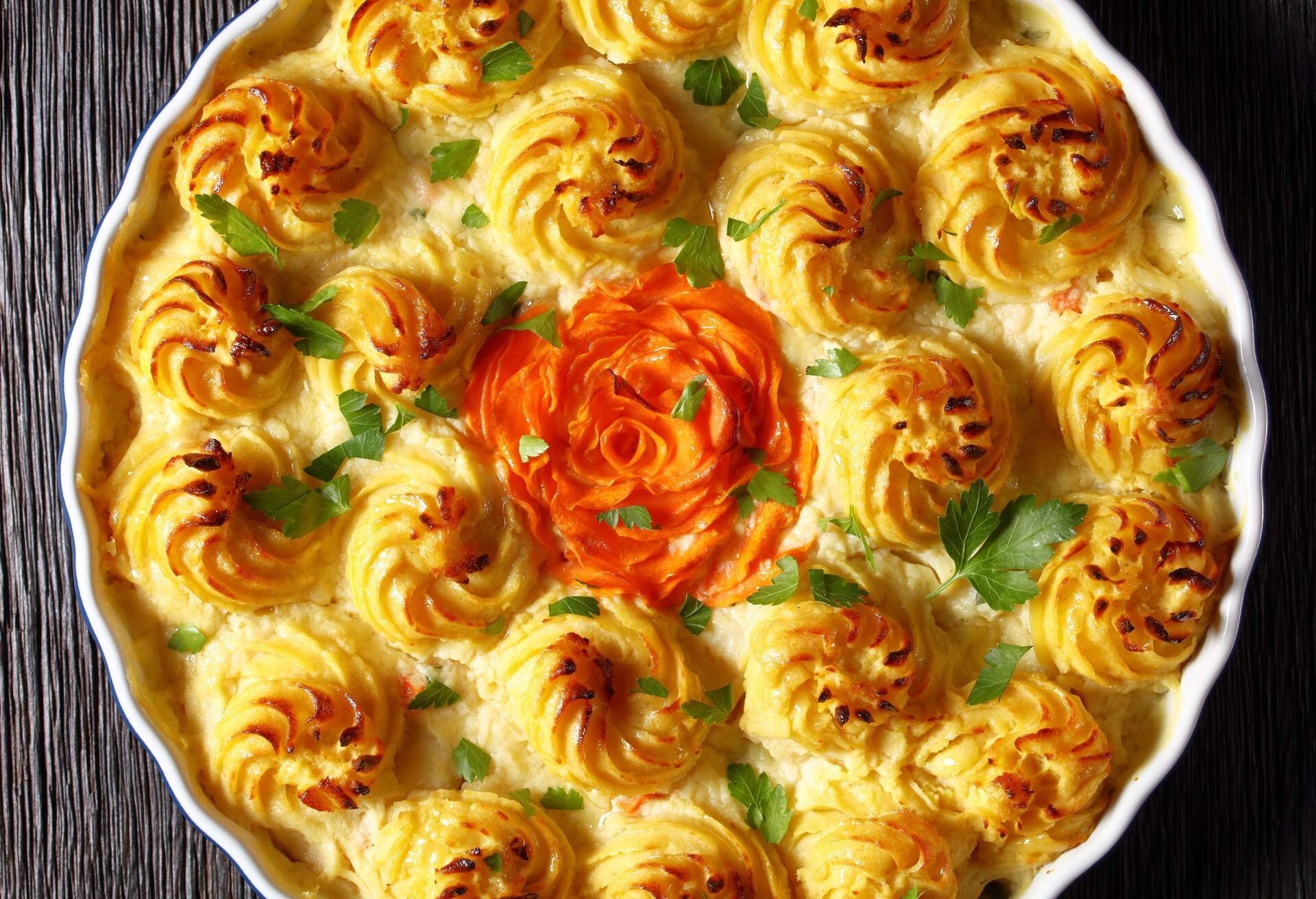
This is very similar to Shepherd’s pie, obviously with fish substituted for minced meat. Plain white fish is the most common filling beneath the mashed potato layer. You can also find it embellished with other seafood, such as shrimp or shellfish. It’s usually served with vegetables on the side.
Traditional Irish foods for your sweet tooth
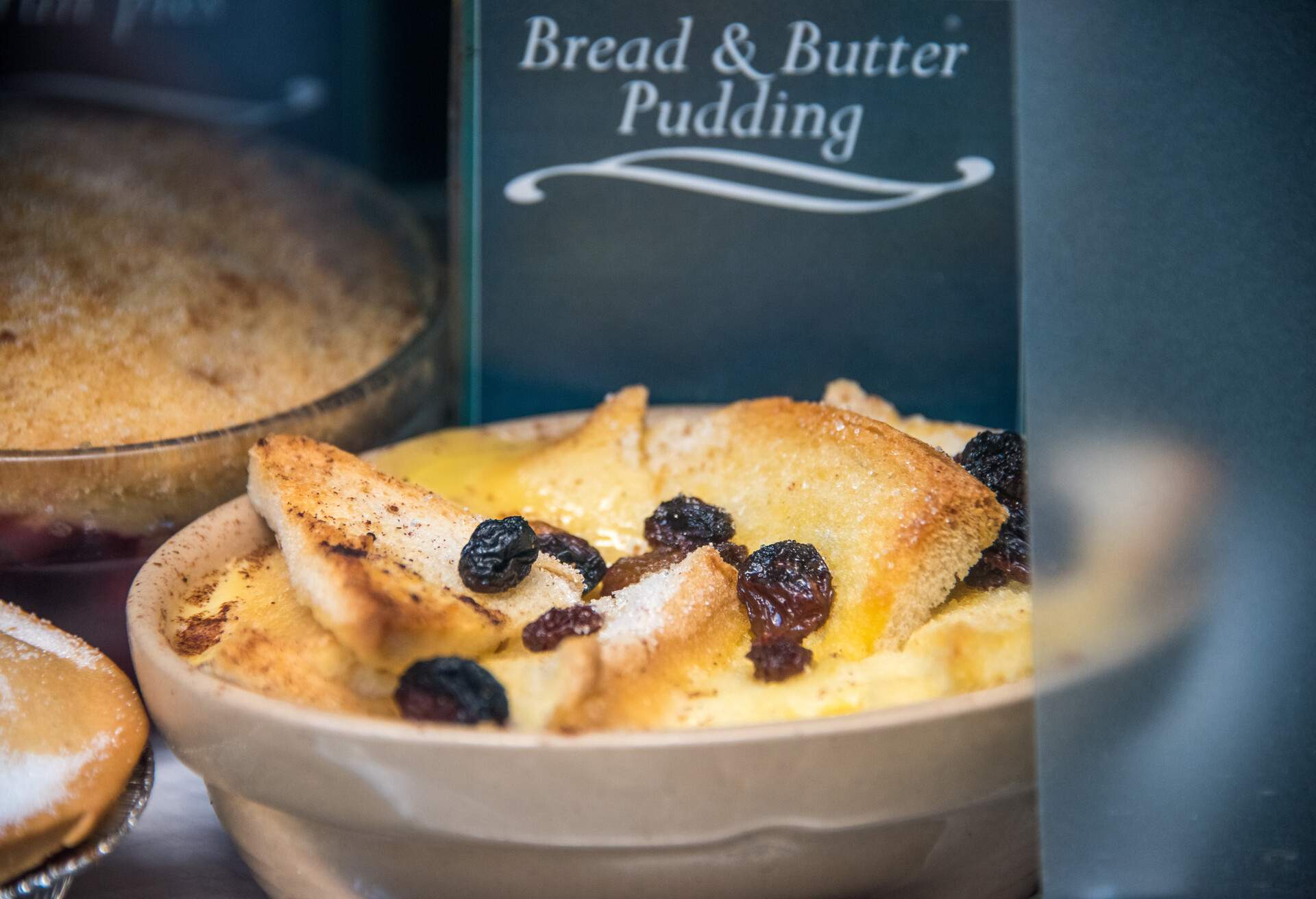
Ireland also offers a few sweet delicacies. Most are variations on well-known British cakes and biscuits given an Irish twist. A couple can only be found in Ireland. Here are the ones you shouldn’t miss.
Biscuits, cakes and puddings
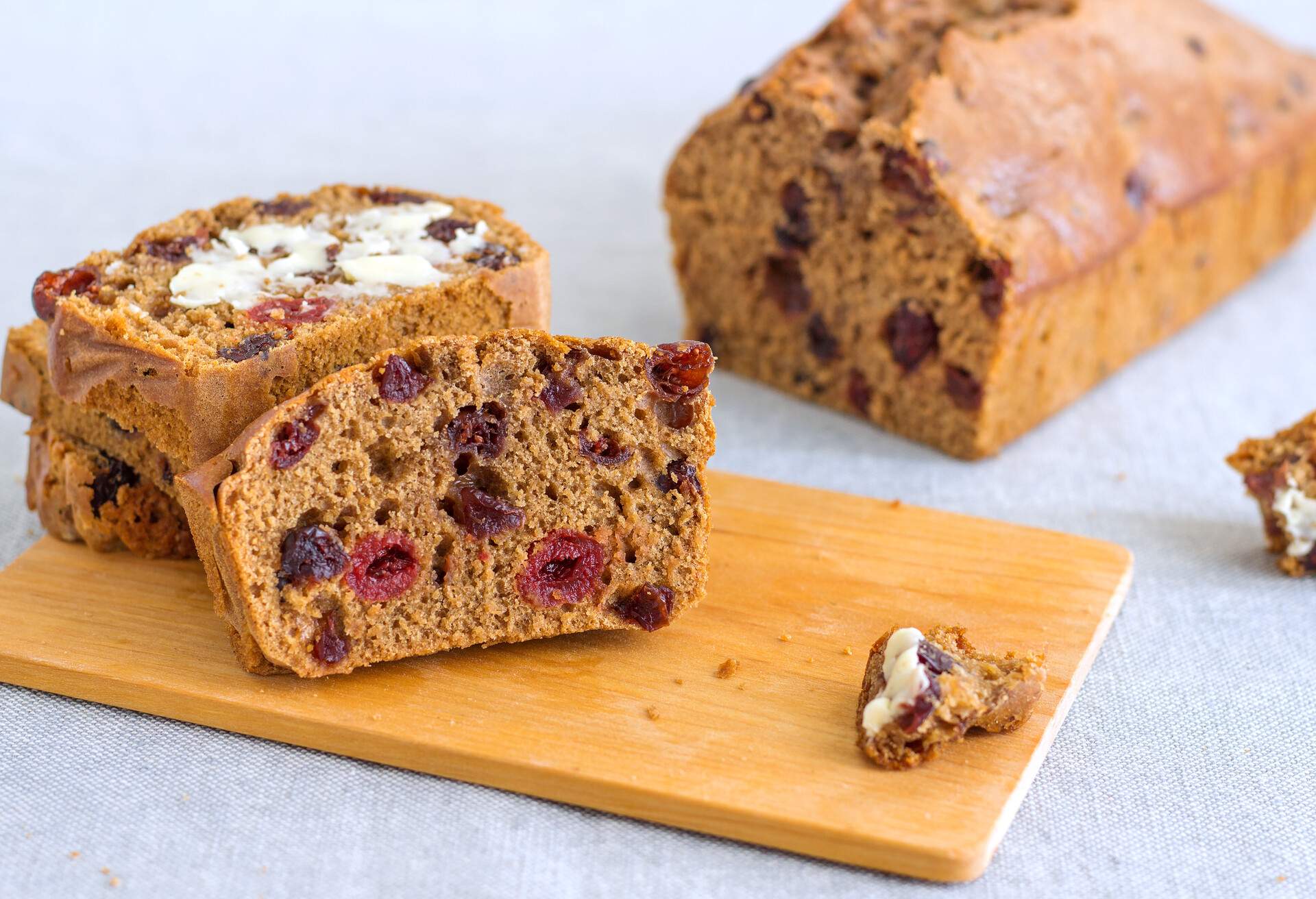
The most traditional Irish foods with a sweet edge are Irish apple cake and Irish shortbread – the latter being Scottish shortbread made with creamier Irish butter. Irish apple cake celebrates the country’s long love affair with apples, served with a custard sauce. Barmbrack translates as “speckled bread”, made with dried fruit and raisins. Lastly, there’s bread pudding, made uniquely Irish by using soda bread.
Traditional Irish drinks

Ireland is well known for its love of a tipple or two, whether in the form of dry stouts or its world-famous whiskey. You can also get local ciders or sample traditional combinations that are sturdier than your average cocktails. If you’re feeling intrepid, you can also try traditional moonshine.
Stouts and ciders
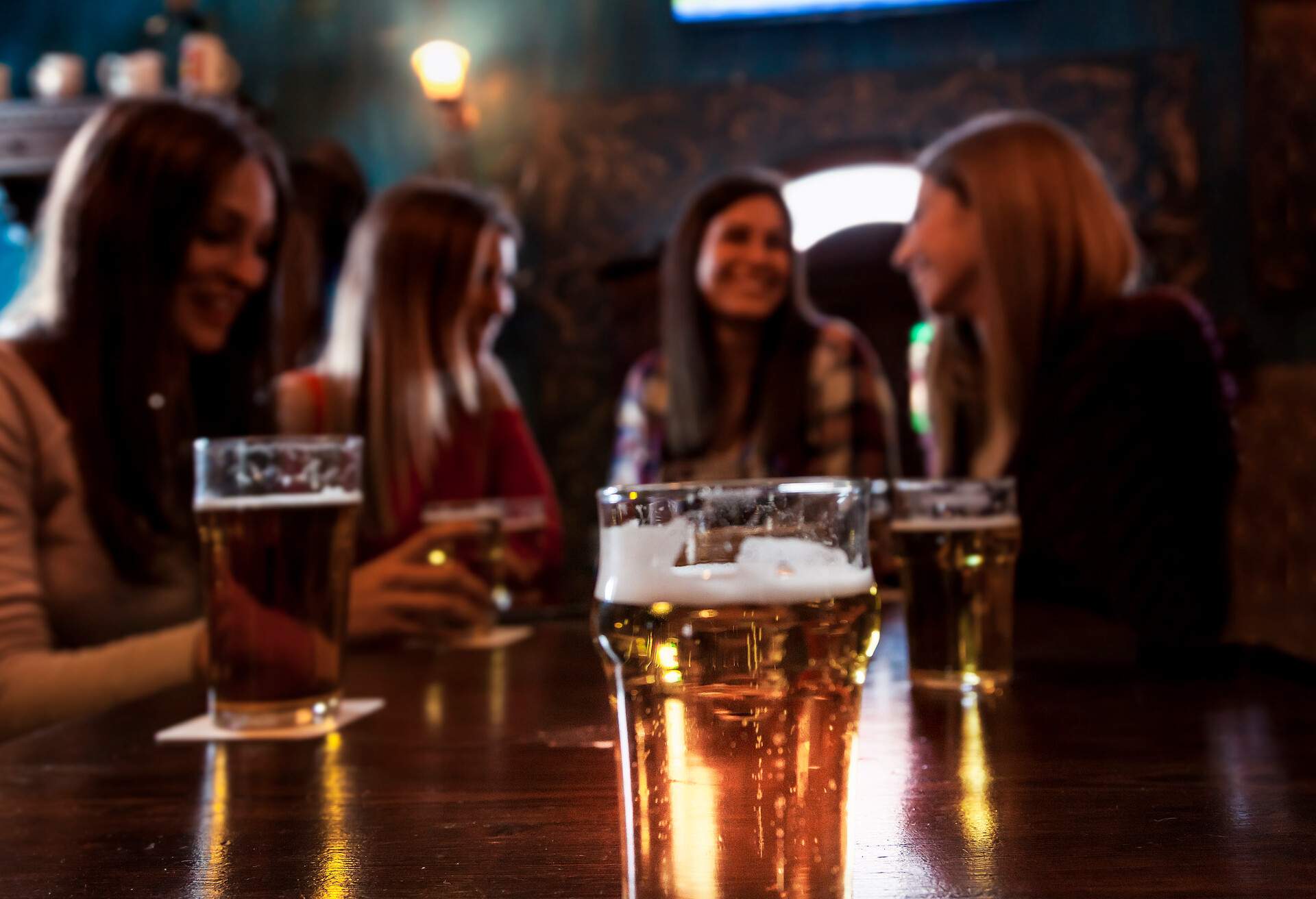
Guinness is the pride of Ireland and one of the world’s favourite dry stouts. Drinking a fresh draught a stone’s throw from the original brewery is a real tourist treat. You can also try Irish cider. It’s made with locally grown apples and comes in a variety of flavours, like berry and pear.
Mixed drinks
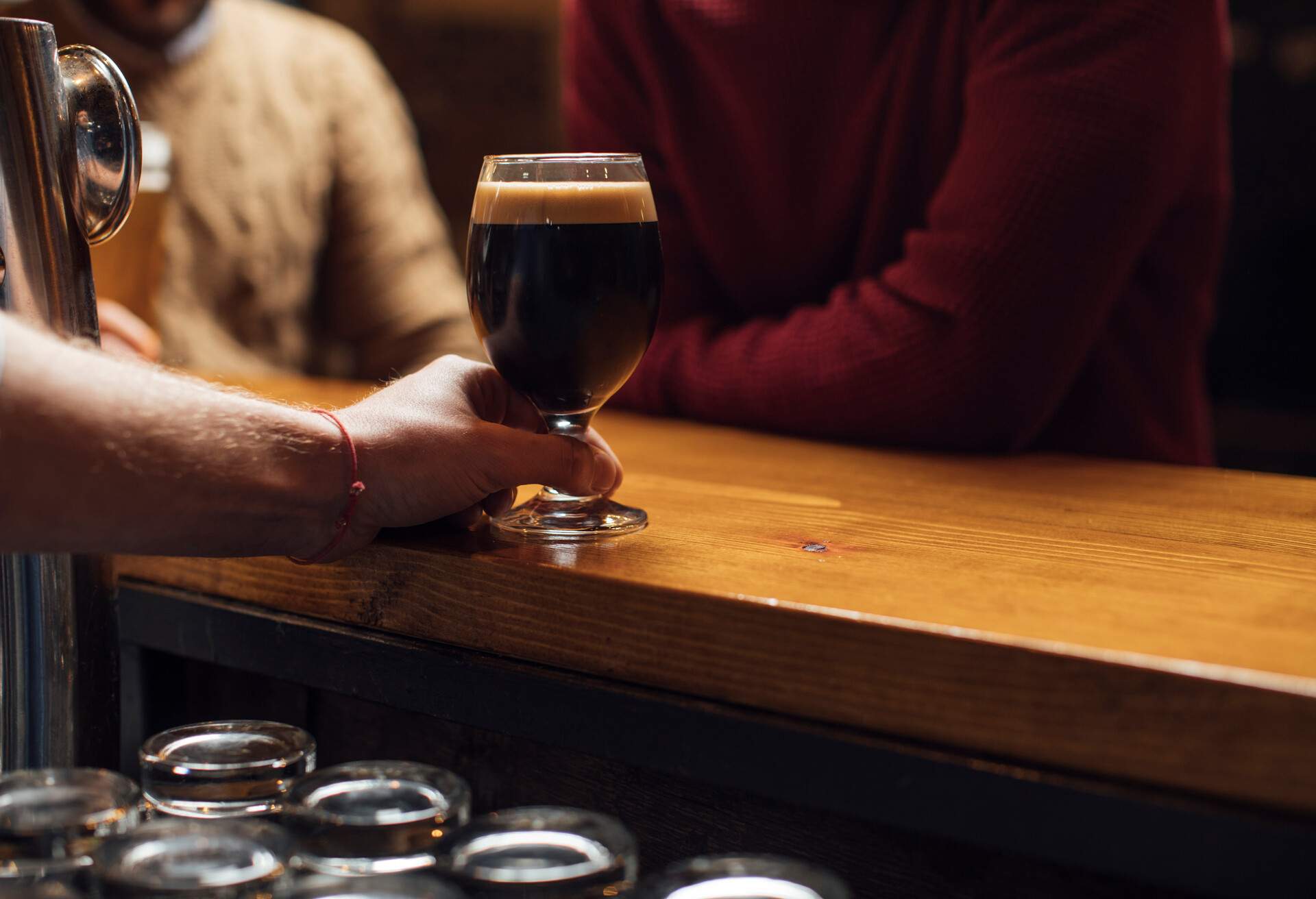
Black & black offers a twist on a standard draught of Guinness. It’s made by adding blackcurrant liqueur to Guinness, to take off the bitter edge. And yes, Irish coffee really is from Ireland, and you’ll have your pick of whiskies to add to yours.
Traditional Irish whiskies
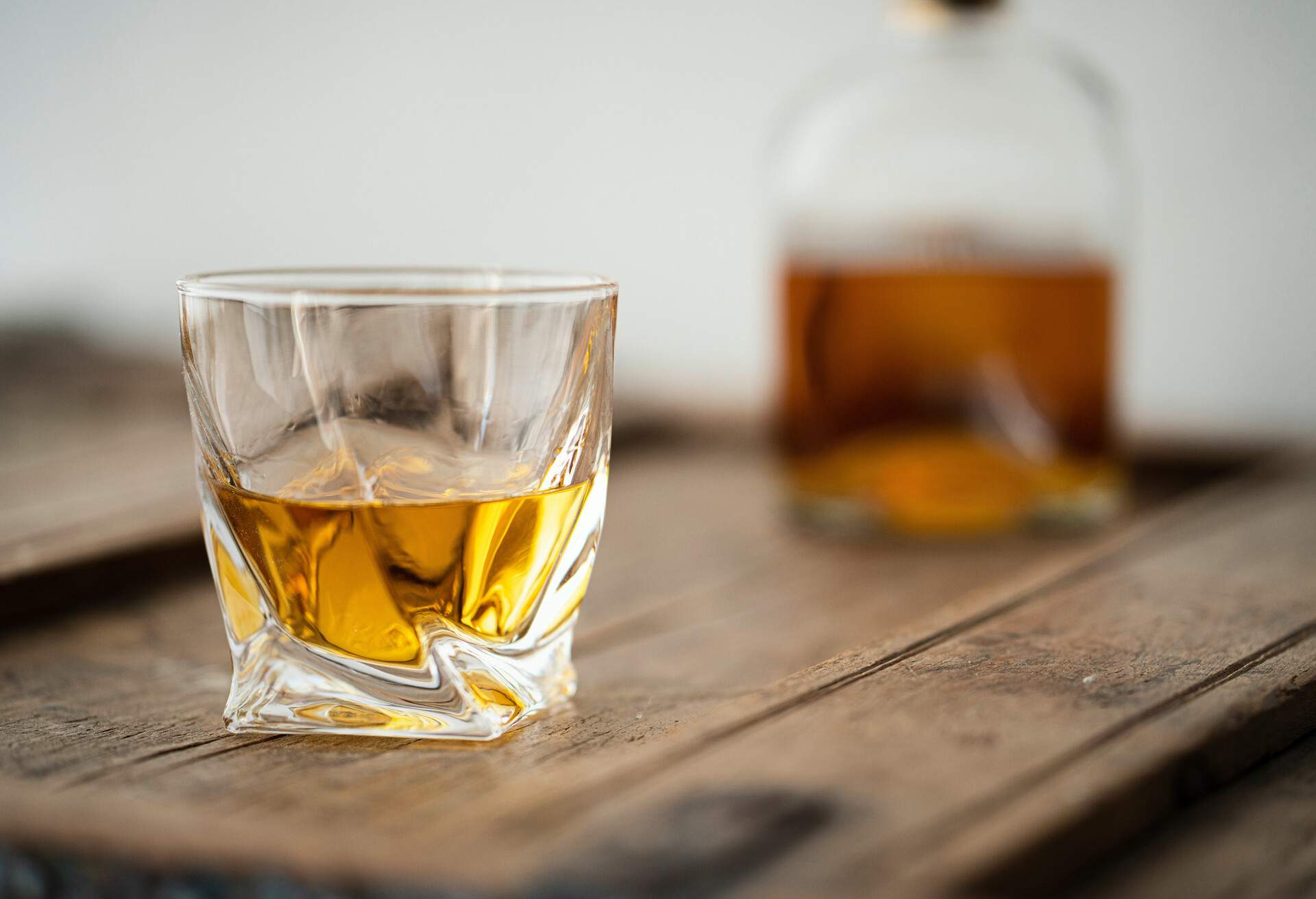
Irish whiskey is distinctly different from Scotch. Jameson is probably the most famous, but since you’re in Ireland, rather visit one of its four main distilleries. You can go on tasting tours at Bushmills, Kilbeggan, Midleton and Cooley, or try the more modern trend of mixing it with cranberry juice.
Excited for your next adventure? Our friends at Where to Go, produced by the team behind the award-winning DK Eyewitness travel guides, are here to help!
Each fortnight, hosts James and Lucy talk to local experts about the destination they have chosen to call their home, exploring their personal connection to the place, what makes it so special and the best things to see and do.
Listen to the podcast below for more inspiration and tips from Dublin & Ireland:
